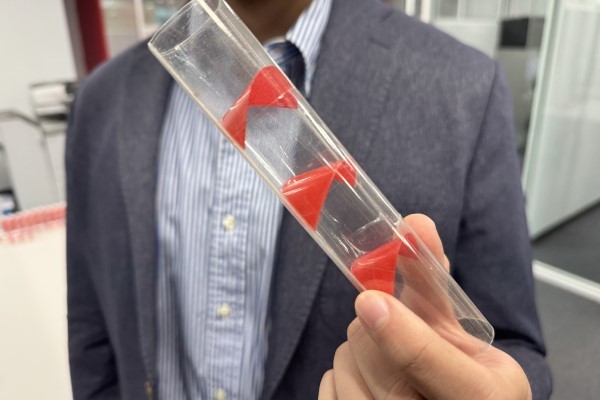Engineers design flat-pack tube ‘origami’ building material

This breakthrough was made possible by a self-locking system inspired by curved-crease origami, a technique that uses curved crease lines in paper folding.
Lead researchers Ting-Uei Lee and Yi Min Xie say bamboo inspired the tube design with its internal structures providing natural reinforcement.
“This self-locking system is the result of an intelligent geometric design. Our invention is suitable for large-scale use. A panel made from multiple tubes weighing just 1.3kg can easily support a 75kg person,” Ting-Uei says.
Flat-pack tubes are already widely used in engineering and scientific applications, such as in biomedical devices, aerospace structures, robotics and civil construction, including pop-up buildings as part of disaster recovery efforts.
The latest system makes these tubes quicker and easier to assemble, with the capability to automatically transform into a strong, self-locked state.
The research is published in the prestigious journal Proceedings of the National Academy of Sciences. Other contributors to this work include Dr Hongjia Lu, Dr Jiaming Ma and Dr Ngoc San Ha from RMIT’s school of engineering and University of Queensland associate professor Joseph Gattas.
Next, the team plans to develop tubes that can deploy themselves for a range of applications without requiring much manual effort.
